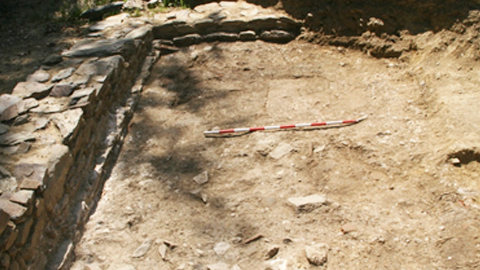Frontal part of the Roman forum of Llívia discovered

22/09/2017
The excavations have revealed the limits of the pronaos or front part of the temple, which measures some 4x7 metres, and a small step which gives way to a lower construction covered with opus signinum- a construction material used in ancient Rome, as well as the southernmost part of the building, which according to researchers would be related to the side accesses leading to the temple's podium.
Another important discovery has been a dump site dating back to the moment in which the forum was built, located at the inferior part of the exedra a meeting hall with stone benches. Although archaeologists thought that work had been finished in this hall, under the benches forming the foundations of the internal wall they discovered a full layer of tegulae, coal, bones and other materials. Researchers point out the richness of the pottery discovered, especially the large repertoire of types of clay pottery, known as terra sigillata aretina, which can allow them accurately to date the moment the forum was constructed.
A total of eight students from the bachelor's degree in Archaeology participated in this year's dig, as did professionals of the firm Arqueòlegs.Cat, under the direction of Jordi Guàrdia and Cèsar Carreras (UAB), under the Fòrum de Llívia project which is led by Josep Guitart (UAB).
With the completion of the sounding phase, in which the characterisation of the remains of the unique Roman buildings were conducted, the Llívia City Council, in collaboration with the Girona Provincial Council, looks now to conduct the urban actions needed to continue with extensive digs and put into value this important archaeological heritage found in the Cerdanya region.